The Best High-Performance Winter Tires

Just because it’s cold, wet, snowy or icy doesn’t mean you can’t drive a sporty or high-performance vehicle. The best high-performance winter tires and snow tires are designed for drivers that want enhanced dry road handling from their winter/snow tires, while sacrificing maximum snow and ice traction. But don’t get us wrong: winter tires in this category are still great for winter driving, and far better than all-season tires in low temperatures and winter conditions. While they’re among the best snow tires, we did not include any studded snow tires in this list. We’ve driven on studded tires and they’ll get you through anything, but they’re not legal everywhere and are definitely not your first choice for spirited driving.
The best tires for snow were originally developed for winter driving on European highways, where higher speed limits are more common than in North America. Typically, these winter tires are available in a wide range (usually larger) of sizes for sporty coupes and luxury sedans, as well as some fitments for crossovers and SUVs. Many manufacturers offer multiple lines of snow tires, sometimes with very subtle differences (Michelin has six different Alpin tires), so we’ve tried to pick out the most appropriate ones for the category. In addition, AutoGuide works with independent tire professional Jay Condrick at Boston Mobile Tire to gain real-world insights into snow tires from the experience of thousands of consumers in the snowy New England climate.
When purchasing the best snow tires, you must install them in sets of four. Performance winter tires and snow tires can be H-, V-, or W-speed rated and meet severe snow service standards, meaning they are branded with the special Alpine Symbol, also called the three-peak mountain snowflake (3PMSF). See our Table of Contents for more on what this means, and to learn more about performance winter tires and snow tires.
Table of contents
- 1. Jay's Pick: Michelin Pilot Alpin PA4
- 2. Pirelli P Zero Winter
- Promoted Product: Bridgestone Blizzak WS90
- 3. Dunlop SP Winter Sport 4D
- 4. Bridgestone Blizzak LM-32
- 5. Goodyear Ultra Grip 8 Performance
- 6. Continental ContiWinterContact TS 830 P
- 7. Vredestein Wintrac Pro
- 8. Yokohama BluEarth Winter V905
- What are Studded and Studless Winter Tires?
- Why Should You Use Studded Tires?
- What is the Alpine Symbol?
- Our Final Verdict
1. Jay's Pick: Michelin Pilot Alpin PA4
"I always have a Blizzak, a Michelin, and a Nokian in my suggested tires," says Jay, and he steers his customers who want to tip the balance towards performance away from the "soft and squirmy tread" in aggressive Blizzaks and Nokians, to the Michelin Pilot Alpin PA4. Michelin tells us that the Pilot Alpin PA4 is a European snow tire and not every retailer will have it, but we've found it widely available at most major outlets. In addition to Jay, Tire Rack and their customers love Pilot Alpin PA4 snow tires, coming out on top both in performance testing, and in customer ratings for the performance snow tire category.
Michelin is a well-trusted brand when it comes to performance tires, so it's little surprise the company offers a performance winter tire that has been developed to meet the needs of enthusiasts who may encounter snow on their drive. The Michelin Pilot Alpin PA4 is designed for ultra high performance sports cars, sedans, or coupes and offers performance in freezing temperatures, snow, and ice.
These snow tires also offer low rolling resistance to enhance fuel economy and are manufactured using eco-focused methods, wearing Michelin's Green X branding. They are designed to deliver secure driving year after year in wintry conditions. Helping the tire remain more flexible in low temperatures is a full silica-based, sunflower oil-enriched Helio Compound tread rubber. Enhancing acceleration, braking, and handling are Michelin's high-density Stabiligrip 3D sipes.
Internally, this tire's structure includes twin steel belts that have been reinforced by the company's FAZ technology, which places spirally wound filaments of polyester cord under the tread to combine stable feel, confident handling, and high-speed capability with ride comfort.
These radials meet the industry's severe snow service requirements and are branded with the Alpine Symbol.
Pros | Decent snow traction, great dry performance, good steering response, good noise and ride comfort |
Cons | Pricey European tire model that has limited availability in North America |
2. Pirelli P Zero Winter
Pirelli's P-Zero has long been a standard bearer for ultra high-performance summer tires, and after debuting the P Zero Winter at the 2019 Geneva Motor Show, it finally became available for North American customers in early 2021. Despite being a performance oriented snow tire, the Pirellis carry severe snow service certification, and are branded with the Alpine Symbol.
What makes these some of the all-around best winter tires is an asymmetrical tread pattern with deep grooves and wide channels to move water and slush from under the snow tire; high-density lateral siping for increased traction in slippery conditions; and cool brickwork-pattern outboard to provide more biting service, with a resulting increase in contact patch.
P Zero Winter tires are only available in 19-inch and up sizes, at sometimes eye-watering prices, and there isn't much feedback on them yet, but what we've heard so far, along with the technology and Pirelli's reputation, suggest they may have a winner.
Pros | Top handling in dry, cold conditions, still good when it gets snowy |
Cons | Sacrifices deep snow traction for dry road performance, expensive |
Promoted Product: Bridgestone Blizzak WS90
They're not a sporty tire designed for autocross, but if you own a car, SUV, CUV, or minivan and are looking for a tire built for maximum winter grip and safety, then the Bridgestone Blizzak WS90 is an excellent choice. AutoGuide Commerce Editor David Traver Adolphus has bought two full sets of the previous model Blizzak WS80s (and another set of WS60s before that) for his personal vehicles in snowy Vermont, and reports they offer unbeatable grip and braking in the worst conditions.
Developed specifically with a winter tread for cold and icy weather, the WS90 features a flexible rubber compound that increases traction during these conditions. And it boasts additional block edges that decrease stopping distance when you’re driving through snow, sleet, or even on ice. That means more control and a safer drive in wintery conditions.
With the WS90, you just aren’t getting great winter tires—you’re getting ones that are going to last longer and drive further: Bridgestone uses a stiff tread pattern that reduces uneven wear to help increase the life of your tread, giving you more winter driving and fewer headaches.
So, if you need winter tires built to last longer, you’ve found it in Bridgestone’s Blizzak WS90.
Pros | Good control in winter conditions, longer-lasting tread, should wear evenly |
Cons | More for harsh snow conditions than performance, a little loud |
3. Dunlop SP Winter Sport 4D
One of Dunlop's two offerings in the performance winter/snow tire category is the SP Winter Sport 4D, developed for sports cars, coupes, and sedans that come straight from the factory with low profile tires mounted on larger diameter wheels. These snow tires will provide traction on dry, wet, slushy, and snow-covered roads. Sporting a motorsport-derived silica-plus tread compound, these tires deliver high levels of grip especially on wet roads and in low temperatures.
The compound on the SP Winter Sport 4D is molded into a directional tread, sporting long V-shaped grooves that help prevent hydroplaning. The tread also is designed to maintain good traction on wet and slush-covered roads. To help generate better footprint pressure distribution while enhancing snow handling and cornering grip is the tire's Sipe System, which combines Dunlop's 3D sipe technology with transverse sipes, creating independent micro-blocks.
Internally, this tire's structure includes twin steel belts reinforced by Dunlop's JointLess Band (JLB), optimizing the contact patch shape while minimizing deformation at high speed. These snow radials meet the industry's severe snow service requirements and feature the Alpine symbol.
Pros | Solid performance on dry, wet, or light slush roads |
Cons | Moderate road noise, average performance in freezing rain or black ice |
4. Bridgestone Blizzak LM-32
Bridgestone's entry in the performance winter/snow tire category is the Blizzak LM-32, designed for sports cars, sporty coupes, and performance sedans. This tire was originally introduced in sizes for the Aston Martin Rapide sports sedan, but has since become available in a wide range of sizes, geared towards owners who want to main their vehicle's sporty appearance during winter time. These tires provide traction on cold, dry, wet, and snow-covered roads.
Its tread compound features unique polymer technology, designed to enhance cold weather traction. The compound is molded into a directional design, which combines hydroplaning resistance on wet and slush-covered roads with confident grip and braking traction in cold wintry conditions. Helping promote dry and wet road handling are rounded shoulders, while stepped independent tread blocks featuring Lamellen edge effect sipes boost the number of biting edges, improving grip in snow and on ice. As a result, the Bridgestone Blizzak LM-32 is able to combine winter traction with H-, V-, or W-speed rated capability.
Like the best winter tires in this segment, the Blizzak LM-32 is branded with the Alpine/3PMSF symbol.
Pros | Solid handling, noise, and traction performance |
Cons | Average performance in dry conditions, more of a winter tire than a snow tire |
5. Goodyear Ultra Grip 8 Performance
Just by looking at it, you can see what makes Goodyear's Ultra Grip 8 Performance one of the best high-performance snow tires. Resembling a sporty all-season tire, it's an aggressive pattern that lacks the tall tread blocks and deep grooves of tires built for deep snow.
What it does offer is a directional tread pattern and optimized polymer blend and silica winter tread compound designed to remain flexible and provide maximum grip in cold, wet conditions. Nevertheless, it also has enough room in the tread to cope with snow and slush and where a summer tire often has an open center section, this snow tire has a saw-shaped center rib designed to provide grip on snow and ice.
At time of writing, availability for this winter season was limited, so shop around for the best deals.
Pros | Excellent wet and dry traction, cornering performance, and hydroplaning resistance |
Cons | Limited availability. Moderate road noise, average performance in deep snow and ice |
6. Continental ContiWinterContact TS 830 P
We've been big fans of Continental's summer high performance Touring Contact tires for years, and they're standard equipment on many high-performance luxury cars. So there were high expectations for high-performance snow tires with a similar name when they appeared almost 10 years ago.
You can see from the tread pattern that these snow tires combine elements from pure snow tires—like deep, wide grooves between the center tread blocks and heavy siping in a dual-density material—with the broad, rounded shoulders of performance tires. The center blocks are extra stiff to grip snow and ice, and the big channels get through messy slush and evacuate water.
Both these elements are aggressive, and the result is a tire popular both in Northern Europe and Canada with luxury and sports car drivers. The downsides are a short lifespan and high price in a tire that still among the very best performers in the category, but may not offer the same value proposition as some competition.
Pros | Approaches pure snow tire performance with performance tire feel |
Cons | European model with limited availability, performance tire lifespan, only larger sizes available, expensive |
7. Vredestein Wintrac Pro
Vredestein may be a bit of a dark horse in North America, where our market is dominated by a few major brands. But the Dutch brand is popular in Europe, and the Wintrac Pro high-performance snow tire has been a hit since it was introduced in 2018. Jay says they're an "outside the box" pick for people looking for a great price-to-performance ratio.
If Vredestein is known for anything here, it's making tires in hard to get sizes, and that's true for their performance snow tires, as well. Many brands don't sell anything under 18 or even 19 inches, but Vredestein Wintrac Pro snow tires are available in 118 sizes from 205/50 R17, to 265/35 R22.
Don't think you're giving anything up in performance, either. The Vredesteins (which were styled by Giugiaro!) use a directional resin- and silica-enhanced tread pattern with broad shoulders with high-angle sipes optimize handling in snowy or icy conditions for superb cold wet and dry road handling; and horizontal sipes in the center tread blocks for grip on snow and ice.
Reports from Europe are universally positive, praising performance comparable to high-performance all-season tires on clear roads. Don't expect to get endless miles out of them, however, and like other high-performance snow tires that prioritize wet and dry grip over handling in snow, they won't be your first choice if you're driving on uncleared roads. But if you want something different, with great road feel in many sizes, these are an excellent choice.
Pros | Wide range of sizes, more affordable than others, outstanding dry winter grip |
Cons | Shorter lifespan, not a great choice for deep snow |
8. Yokohama BluEarth Winter V905
Yokohama is not known as a big player in snow tires. With five models, they're much better known for their Advan summer rubber, as well as their mud-terrain and off Geolander tires. That makes their BluEarth Winter V905 an intriguing choice, especially if your carbon footprint is as much of a concern and your contact patch.
These winter tires feature and all-new end-locked high-silica rubber compound made with orange oil, which aids in keeping them flexible across a wide range of temperatures. Big directional grooves and a directions tread evacuate water and slush effectively, and triple 3D sipes grip onto snow and ice.
To improve fuel efficiency, the Yokohama BluEarth Winter V905 is built with thin, high strength steel belts to keep weight down to 24 pounds in the 18-inch tire, and the silica tread material lowers rolling resistance. Anyone who regularly equips high-performance tires, winter or summer, knows your fuel economy usually suffers for the sake of performance.
Pros | Lower rolling resistance, competitively priced, good snow performance |
Cons | Loud and stiff |
What are Studded and Studless Winter Tires?
Photo credit: Blaz Kure / Shutterstock.com
While this article focuses solely on performance winter/snow tires, there are other winter/snow passenger tires available on the market: studdable and studless tires. Studdable tires are products that allow a vehicle owner to add winter tire studs for enhanced traction on ice. Products in this category normally use traditional winter tire compounds and tread designs, providing good traction in snow. They are however, molded to accept metal studs that make it helpful for driving in climates where freezing rain, sleet, and wet ice occur.
Studless ice and snow tires meanwhile, are designed for drivers who need maximum traction in ice and snow, but don't want to use winter tire studs. These products are designed to offer similar performance to studded tires, but doesn't use noisy and road-damaging studs. Normally, tires in this category use pliable tread compounds molded into effective tread designs, sacrificing some handling performance in dry and wet conditions, in exchange for better performance in ice and snow.
Why Should You Use Studded Tires?
If overall driving performance isn't your main concern, then studded tires are more ideal if you're searching for enhanced traction on ice. These tires have actual metal studs embedded in them, which are designed to dig into ice for increased traction. But these studs can damage the road if you're not driving on ice, which makes their use very specific. In fact, some states in the U.S. limit the use of studded tires during non-winter months, and some states don't allow studded tires by law. In addition, these tires tend to be very noisy on the road.
At the end of the day, deciding whether you should use studded tires is largely dependent on your driving conditions. These tires are ideal if you're often driving on icy road conditions and need maximum traction.
What is the Alpine Symbol?
Alpine Symbol on a Nokian Hakkapeliitta R3. Photo credit: David Traver Adolphus / AutoGuide
If you've been shopping for any sort of winter tire, there's a good chance you've run across products sporting the Alpine Symbol. Also known as the three-peak mountain snowflake (3PMSF) symbol, this symbol means a snow tire meets the ASTM F1805 - 20 performance criteria in snow testing to be considered severe snow service rated. That means you may also see the symbol on all-season tires and all-terrain tires that perform well in the snow.
According to the standard, testing measures a tire's acceleration traction on medium-packed snow only. The test doesn't measure braking, turning on snow, and ice traction. Generally, Alpine Symbol-branded tires provide better snow traction than a standard all-season tire with the M+S (Mud and Snow) branding.
Our Final Verdict
By design, performance winter tires provide better handling and steering response in cold, wet, and wintry conditions, especially when compared to studless ice and snow tires. When compared to all-season tires, performance winter tires will offer better traction in snow, slush, and ice. If you're looking for snow and ice traction however, then studless tires are the way to go. One benefit of performance winter tires is that they typically have higher speed ratings and are offered in lower profile sizes, so they're sportier in appearance and performance. They're designed to be used on performance vehicles, and you should always be checking for the three-peak mountain snowflake symbol when shopping for a performance winter/snow tire. So how do you choose the best tire for your vehicle? Start by researching which products are offered in the tire size you need for your car. Then decide if your weather conditions call for more performance in dry, wet, snow, or icy conditions. If you live in an area that experiences heavy snowfall or ice, you may want to pick a tire that focuses on snow/ice performance rather than general cold weather conditions. But if you experience light snowfall during the winter, you may want a tire that performs better in dry conditions.
Recent updates:
October 26, 2021: New recommendations for winter 2021:
Replaced Pirelli Winter Snowcontrol Serie 3 with Pirelli P Zero Winter. Replaced Goodyear Eagle Ultra Grip GW-3 with Goodyear Ultra Grip 8 Performance. Replaced Pirelli Winter Sottozero 3 Run Flat with Continental ContiWinterContact TS830 P. Replaced Dunlop SP Winter Sport 3D DSST with Vredestein Wintrac Pro. Replaced Nokian Hakkapeliitta 8 with Yokohama BluEarth Winter V905.
July 13, 2021: Updated with a promoted product recommendation. January 8, 2021: Additional information on the best high-performance winter tires.We are committed to finding, researching, and recommending the best products. We earn commissions from purchases you make using the retail links in our product reviews. Learn more about how this works. Photo credit: David Traver Adolphus / AutoGuide

After completing a degree project in automotive design, Dave wrote and photographed for almost a decade in print car magazines (remember those?), before transitioning to digital. He now subjects a series of old high-performance cars to the roads and weather in Vermont and wonders why they're always expensively broken. Please stop when you see him crawling under one on the side of the road.
More by David Traver Adolphus



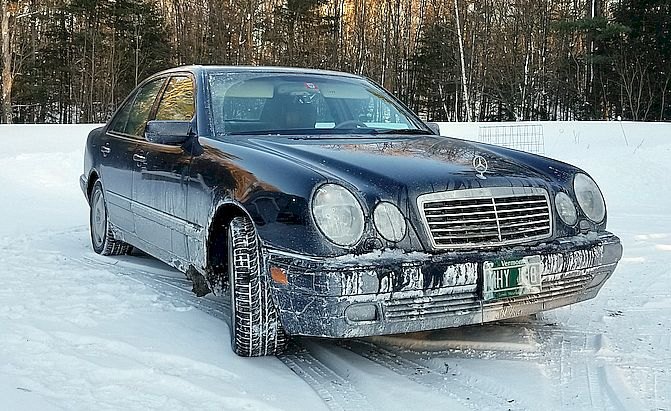
























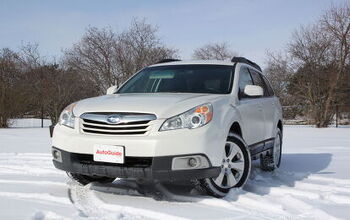
![TGIF[R-S]: Can You Drive a Rear-Wheel Drive Sports Car All Year Long?](https://cdn-fastly.autoguide.com/media/2023/06/08/12476584/tgif-r-s-can-you-drive-a-rear-wheel-drive-sports-car-all-year-long.jpg?size=350x220)
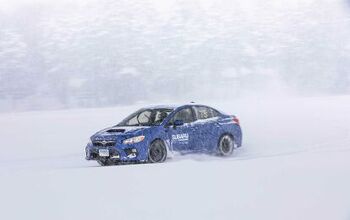
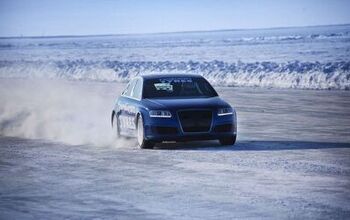
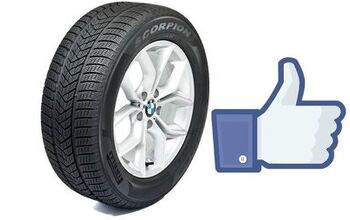
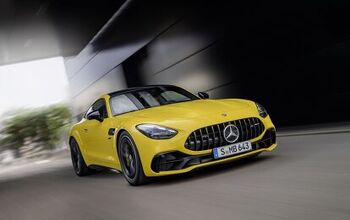
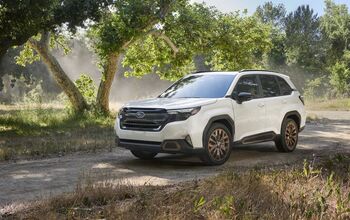





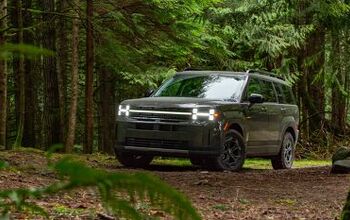
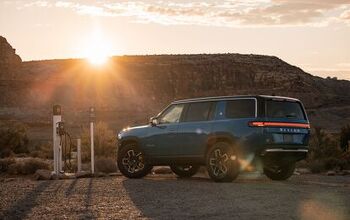
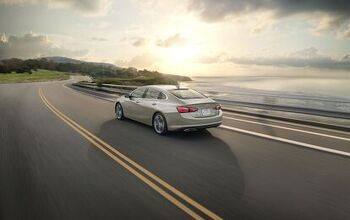
Comments
Join the conversation